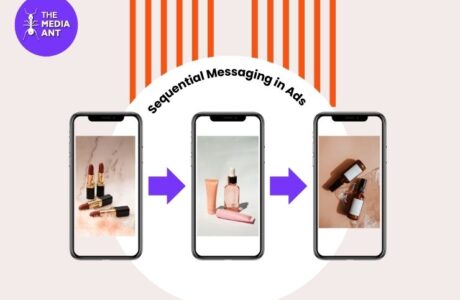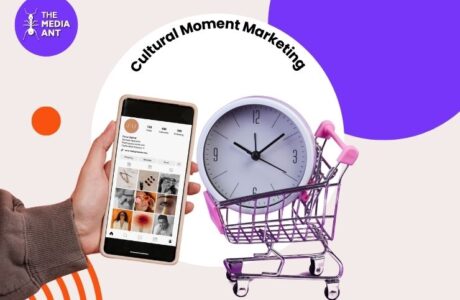Think about the last time you willingly signed up for a newsletter, a rewards program, or even updates from your favorite brand. You weren’t forced into it; you chose to opt in because you saw value in it. That’s the essence of permission-based marketing. Instead of brands shouting for attention, they build relationships with an audience that actually wants to hear from them, making every interaction more meaningful and engaging.
The modern digital landscape is overflowing with ads, pop-ups, and promotional messages competing for attention. With so much noise, consumers have become more selective about the content they engage with, tuning out brands that rely on outdated, interruptive tactics like cold calls and unsolicited emails. Permission-based marketing flips the script—giving consumers control over what they receive, fostering trust, and building lasting relationships between brands and their audiences.
Understanding Permission-Based Marketing
Marketing expert Seth Godin introduced the concept of Permission-Based Marketing in the late 1990s. Imagine receiving only emails and messages that genuinely interest you—no spam, no irrelevant ads, just valuable content tailored to your preferences. That’s the core idea behind permission-based marketing.
Traditional marketing often bombards consumers with unsolicited advertisements, leading to frustration and disengagement. In contrast, permission-based marketing empowers consumers by giving them control over the messages they receive. Whether it’s signing up for a newsletter, subscribing to SMS updates, or following a brand on social media, the customer actively chooses to engage with the brand.
This strategy fosters a mutually beneficial relationship—brands communicate with an audience that genuinely cares about their offerings, and customers receive content they find valuable. Over time, this leads to higher engagement, trust, and brand loyalty, making permission-based marketing a game-changer in the digital age.
The Evolution: From Interruptive to Permission Marketing
Marketing has transformed significantly over the years. Traditional methods relied heavily on interruption—forcing messages upon consumers regardless of their interest. Television commercials, telemarketing calls, and mass email campaigns exemplify this intrusive approach.
However, as consumers gained more control over their media consumption—thanks to email filters, ad blockers, and subscription-based content services—marketers had to rethink their strategies. Permission-based marketing emerged as the solution, ensuring that only engaged, interested audiences receive branded messages.
Key Principles of Permission-Based Marketing
1. Opt-In Model
At the core of permission-based marketing is the opt-in model, where consumers willingly subscribe to receive communications from a brand. This voluntary approach makes marketing messages more welcome and relevant to the audience. Companies implement various opt-in strategies, such as offering exclusive content, discounts, or personalized recommendations in exchange for sign-ups. For example, Nykaa, an Indian beauty brand, encourages users to subscribe to newsletters by offering early access to sales and beauty tips, making the opt-in experience valuable.
2. Transparency
Trust is the foundation of successful permission marketing. Consumers should know exactly what they are signing up for, including the type of content they will receive, its frequency, and how their data will be used. Transparency reduces uncertainty, builds credibility, and minimizes opt-out rates. Brands that provide clear privacy policies and no-surprise communication strategies tend to retain subscribers longer. For instance, Amazon India provides a detailed preference management dashboard where users can modify their notification settings at any time.
3. Respect for Preferences
Consumers appreciate brands that respect their preferences. Providing subscribers with control over how often they receive messages and what kind of content they want ensures a better user experience. Customization options—like choosing between email, SMS, or WhatsApp notifications—enhance engagement and reduce marketing fatigue. Swiggy, for example, allows users to adjust push notification settings in its app, ensuring they receive only the most relevant alerts about restaurant deals, order updates, and special promotions.
4. Value-Driven Communication
People sign up for marketing messages when they see real value in them. Brands must ensure that every email, SMS, or push notification offers something meaningful—be it exclusive insights, special deals, or personalized recommendations. Consistently providing value strengthens customer loyalty and reduces the likelihood of unsubscriptions. A great example is Tata CLiQ, which sends curated fashion and electronics deals based on customer browsing history, making every message relevant to the recipient.
5. Easy Opt-Out Options
Permission marketing is built on trust, and a big part of that is making it simple for users to unsubscribe at any time. A hassle-free opt-out process shows that a brand respects consumer choices and helps maintain a positive reputation. Many successful brands, like Flipkart, include a clear unsubscribe link in every marketing email, allowing users to adjust their preferences without frustration.
By adhering to these principles, brands create an authentic, value-driven relationship with their audience, fostering long-term engagement and brand loyalty.
Benefits of Embracing Permission Marketing
1. Building Trust and Credibility
One of the biggest advantages of permission-based marketing is the trust it fosters between brands and consumers. When customers willingly sign up for emails, SMS notifications, or push alerts, they perceive the brand as more transparent and respectful of their choices. Unlike intrusive advertisements that often feel like an invasion of privacy, permission marketing gives users control over what they receive. This sense of control builds credibility and enhances customer relationships. Brands like Tanishq and FabIndia leverage this approach by personalizing their communication, ensuring that every message feels like a tailored experience rather than a generic promotion.
2. Enhanced Engagement Rates
Since permission marketing targets an audience that has already expressed interest, engagement rates naturally see a significant boost. Emails, SMS campaigns, and social media updates sent with user consent tend to receive higher open rates, click-through rates, and conversion rates compared to unsolicited messages. For example, Nykaa’s beauty alerts notify customers about personalized product recommendations and exclusive deals, increasing not only engagement but also purchase frequency. The key is relevance—if a customer finds value in the content, they are more likely to interact with it.
3. Cost Efficiency
Marketing budgets are always under scrutiny, and permission marketing helps brands optimize their spending by focusing on a quality audience rather than a broad, untargeted one. Since the people on the brand’s mailing or messaging list are already interested, the chances of conversion increase, leading to a better return on investment (ROI). Additionally, by using automated and AI-driven personalization, brands like Swiggy and BigBasket send targeted promotions to users who are most likely to take action, reducing wastage in marketing efforts.
4. Regulatory Compliance
In an age of strict data privacy laws like GDPR (General Data Protection Regulation) and India’s proposed Personal Data Protection Bill, permission marketing is no longer just a best practice—it’s a necessity. Failing to obtain user consent can lead to legal consequences and hefty fines. Brands that adopt permission-based strategies ensure they stay compliant while maintaining customer trust. Amazon India, for instance, provides users with a detailed preference center where they can manage notifications, showcasing its commitment to ethical data practices.
5. Strengthened Brand Loyalty
When customers feel respected and valued, they are more likely to remain loyal to a brand. Permission marketing fosters long-term relationships by consistently delivering value through personalized deals, useful content, and exclusive perks. Companies like Tata CLiQ and CRED enhance customer loyalty by offering VIP discounts and early access to sales for their opted-in subscribers. This approach not only reduces churn rates but also encourages repeat purchases and advocacy, as satisfied customers are more likely to recommend the brand to others.
By embracing permission-based marketing, brands can create meaningful, lasting connections with their audience, driving sustainable growth and improved engagement.
Challenges and How to Overcome Them
While permission-based marketing offers numerous benefits, it’s not without its challenges. Brands must navigate issues like slow list growth, subscriber disengagement, and maintaining compliance while keeping content fresh and engaging. Here’s how to tackle these challenges head-on:
1. Growing Your Email List Organically
Building a high-quality, engaged subscriber list takes time. Unlike intrusive marketing tactics that rely on purchased lists or cold outreach, permission marketing requires a brand to earn the trust of its audience. To attract more subscribers organically:
- Offer compelling lead magnets, such as exclusive discounts, free resources, or early access to products. For example, Nykaa provides beauty tutorials and special offers to users who sign up for their newsletter.
- Utilize social media campaigns and website pop-ups that highlight the benefits of subscribing.
- Partner with influencers or industry leaders to promote sign-ups authentically.
- Optimize your website’s user experience so that visitors find it easy and worthwhile to subscribe.
2. Maintaining Subscriber Engagement
A growing list is useless if subscribers lose interest and stop engaging. The key to maintaining engagement is delivering consistent value and staying relevant.
- Personalize your content—use data insights to send tailored recommendations and offers based on user behavior. Amazon India’s personalized product recommendations significantly boost engagement.
- Diversify your content formats—mix educational articles, behind-the-scenes stories, and promotional messages to keep interactions dynamic.
- Keep a consistent but non-intrusive communication schedule. For instance, sending emails too frequently can lead to unsubscribes, while sending too rarely can result in lost interest.
- Encourage two-way communication by including surveys, polls, and interactive content to keep subscribers engaged.
3. Managing Inactive Subscribers
Even with the best content, some subscribers will inevitably become inactive. Instead of ignoring them or immediately removing them from your list, implement strategies to re-engage them:
- Send win-back campaigns featuring special offers, a reminder of their benefits, or a simple “We Miss You” message.
- Allow subscribers to adjust their preferences instead of unsubscribing completely. Many brands, like Flipkart, offer frequency settings so users can control how often they receive updates.
- Identify reasons for inactivity by analyzing open rates, click-throughs, and A/B testing different subject lines and content formats.
- If re-engagement efforts fail, consider removing inactive subscribers to maintain a healthy list and improve deliverability rates.
By addressing these challenges proactively, brands can create a highly engaged, loyal subscriber base that drives long-term growth and brand advocacy.
Strategies for Effective Permission Marketing
1. Crafting Compelling Opt-In Forms
Opt-in forms should be short, persuasive, and visually appealing. Using compelling CTAs (e.g., “Get Exclusive Deals Straight to Your Inbox!”) increases sign-ups.
2. Implementing Double Opt-In Procedures
A double opt-in ensures that only genuinely interested users subscribe. This process requires users to confirm their subscription via email, improving list quality.
3. Personalizing Content
Tailoring emails and messages based on subscriber preferences enhances relevance. Personalized recommendations, dynamic subject lines, and behavior-triggered emails drive engagement.
4. Allowing Preference Management
Allowing users to update their preferences (e.g., selecting email frequency or preferred topics) helps reduce unsubscribes and improves user experience.
5. Simplifying the Unsubscribe Process
A clear, hassle-free unsubscribe option prevents frustration. Making it easy for users to opt-out ensures compliance and maintains brand reputation.
Real-World Examples of Successful Permission Marketing
1. Republic’s Double Opt-In Approach
Republic, an investment platform, ensures a highly engaged audience by using double opt-ins, filtering out uninterested users and improving email deliverability. By requiring users to confirm their subscription, Republic creates a high-quality email list, reducing bounce rates and increasing engagement with genuinely interested subscribers.
2. NBC’s Preference Update Initiative
NBC employs a user-centric email preference management system, allowing subscribers to choose the type of content they receive and the frequency of emails. This initiative has led to higher open rates and lower unsubscribe rates, as users only receive content that is relevant to them, making the brand’s communication feel more personalized and valuable.
3. Animoto’s Re-Engagement Campaign
Video marketing tool Animoto launched a win-back email campaign targeting inactive subscribers. Instead of removing dormant users outright, Animoto designed a re-engagement sequence with special incentives, personalized video recommendations, and interactive content. This approach successfully reignited user interest and prevented unnecessary list attrition.
4. Fly By Jing’s Opt-Out Message
Fly By Jing, a food brand, took an unconventional yet highly effective approach by sending an opt-out email before the holiday season, allowing subscribers to choose whether they wanted to receive holiday promotions. This initiative was well-received, as it gave consumers control over their inbox, reinforcing the brand’s commitment to respecting user preferences. The campaign led to increased trust, positive customer sentiment, and, ultimately, stronger engagement with those who remained subscribed.
Conclusion
Permission-based marketing is no longer just an option—it’s a necessity in today’s consumer-driven world. By shifting from intrusive advertising to a consent-based approach, brands build stronger relationships, boost engagement, and achieve long-term business success. Implementing transparency, personalization, and user control ensures that marketing efforts are both effective and ethical.
FAQs on Permission-Based Marketing
What is permission marketing with an example?
Permission marketing is a strategy where businesses seek explicit consent before sending marketing communications. For example, Zomato asks users to opt in for email and SMS alerts about exclusive offers and personalized food recommendations, ensuring that only interested users receive updates.
What are the benefits of permission marketing?
Higher engagement – Consumers who opt in are more likely to interact.
Improved trust and credibility – Transparency fosters long-term relationships.
Better ROI – Targeting an interested audience reduces wasted marketing spend.
Legal compliance – Adhering to privacy laws ensures ethical marketing.
What is the process of permission marketing?
Attract users through lead magnets, social media, or website pop-ups.
Encourage opt-ins with transparent benefits.
Verify consent through single or double opt-in.
Engage subscribers with valuable, relevant content.
Allow easy opt-outs to maintain trust and compliance.
By adopting permission-based marketing, brands can foster stronger customer relationships, higher engagement, and sustainable growth in an era where consumer trust is invaluable.





